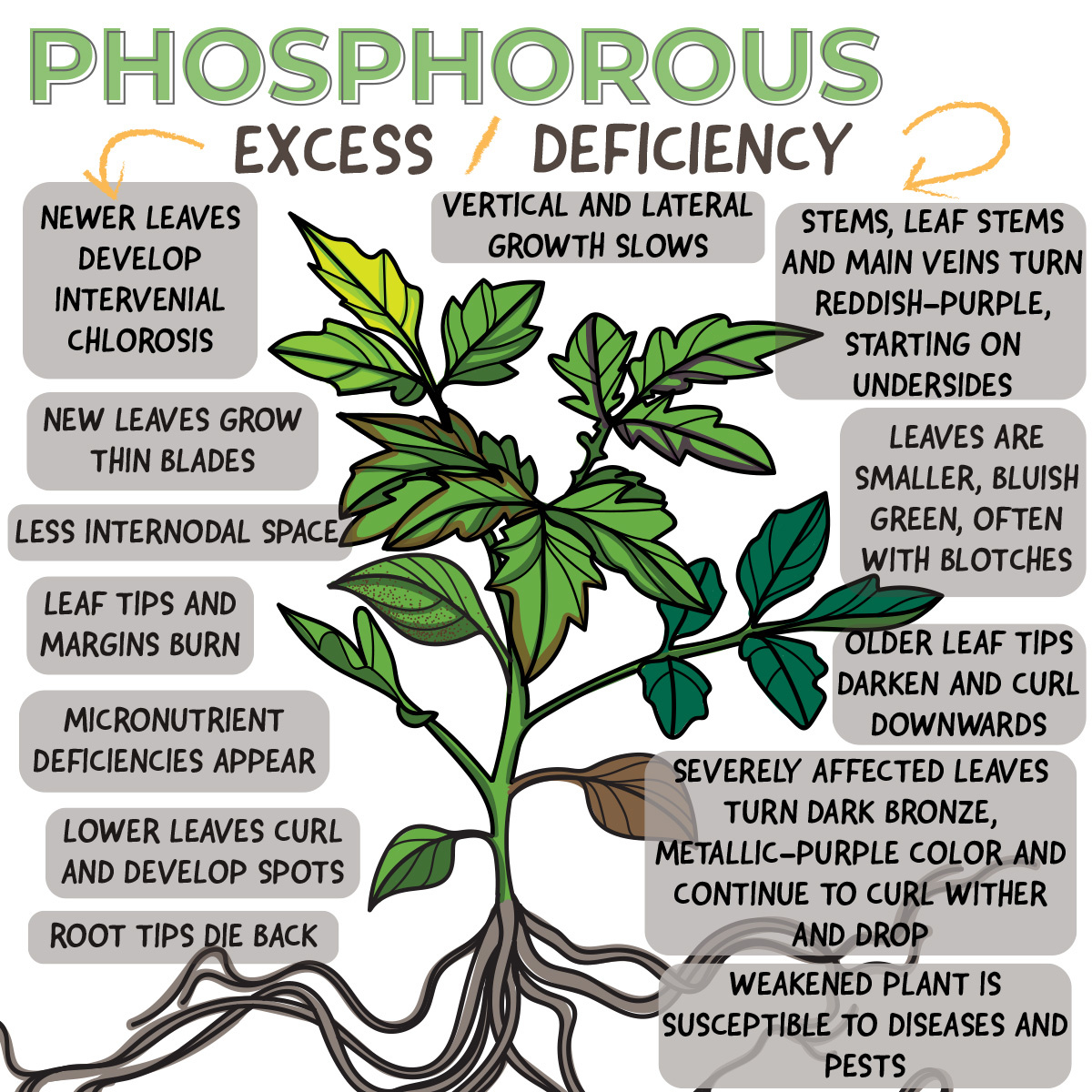Identifying and Treating Phosphorous Toxicity and Deficiency
- Posted on
- By The Biologic Team

Most plants require an array of essential nutrients to flourish. Of these, three macronutrients, nitrogen, phosphorous and potassium, are needed in the greatest amounts for optimal growth. While nitrogen is essential for promoting green, leafy growth during a plant’s vegetative stage, phosphorous is necessary for energy storage and utilization, root development and growth, as well as fruit and flower formation. Phosphorous in either excess or deficient concentrations in the soil can negatively impact a plant’s growth and productivity in numerous ways.
Symptoms of Phosphorous Deficiency
Phosphorus deficiency is difficult to detect in most plants because it results in an overall stunted plant, mimicking other health problems. With severe deficiency, dead areas may develop on the leaves, fruit, and stems. Older leaves will be affected before younger ones as phosphorus moves to the growing part of the plant. A purple or reddish color may be seen on deficient plants. Because phosphorus is not very mobile in the soil, correcting a deficiency once the plant is growing is challenging. Proper phosphorus fertilization at planting time avoids phosphorus nutritional problems during the season.
Treating Phosphorous Deficiency
At Biologic we recommend starting every growing cycle with an application of a balanced fertilizer such as the Amender 2-2-2 and a source of rich organic material such as our Gold Soil Blend, Worm Castings and/or Humus. A high-phosphorous fertilizer (Top Bloom 2-6-6) tailored to fruiting a flowering should be applied bi-weekly during the plant’s flowering stage supplemented by a liquid fertilizer (Liquid Bloom 0-4-0). A product such as The Hardener 0-14-0 can be amended and applied in as needed in deficient soils.
Depending on the growing system, monitoring pH, temperature and watering frequency can also help to improve phosphorous deficiency.
Symptoms of Phosphorous Excess
Although less likely than deficiency, phosphorus toxicity can occur. Excess phosphorous prevents the correct absorption of other nutrients such as calcium, magnesium, iron, copper and zinc resulting in the typical symptoms seen in such micronutrient deficiencies. Symptoms include, interveinal yellowing of leaves, burned leaf-tips, thin blades on new leaves, lower leaf curl and spots on lower leaves among others.
Treating Excess Phosphorous
Although methods of treating excess phosphorus will differ depending on the growing medium, in soil-grown plants additions of high phosphorus fertilizers should be reduced or stopped and a root flush considered.
Resources:
Paul Cockson, et al. Impact of Phosphorus on Cannabis sativa Reproduction, Cannabinoids, and Terpenes. https://www.mdpi.com/2076-3417/10/21/7875
Rishi Prasad and Debolina Chakraborty. Phosphorus Basics: Understanding Phosphorus Forms and Their Cycling in the Soil. https://www.aces.edu/blog/topics/crop-production/understanding-phosphorus-forms-and-their-cycling-in-the-soil/
Paul Cockson, et al. How to Optimize Phosphorus Fertility for Cannabis. https://www.cannabisbusinesstimes.com/article/how-to-optimize-phosphorus-fertility-for-cannabis/#:~:text=Phosphorus%20(P)%20is%20essential%20for,and%20root%20growth%20and%20development.
